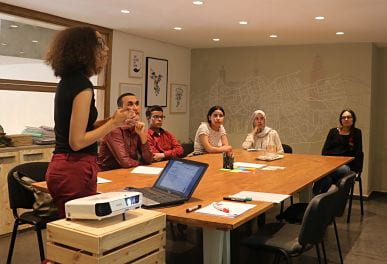 Blog post by Amanda Williams, Senior Lecturer in Social Psychology, School of Education
Blog post by Amanda Williams, Senior Lecturer in Social Psychology, School of Education
Although increasing population diversity presents many opportunities, it also introduces the challenge of prejudice and discrimination. Implicit bias training is frequently used to address workplace discrimination, but is this the best tool in our anti-oppression toolbox?
What is implicit bias?
Implicit (or “unconscious”) biases are beliefs (attitudes, stereotypes) that are effortlessly (and often unintentionally) brought to mind in response to individuals from different social groups, such as race/ethnicity, gender, sexual identities, religion, weight, and so on. Basically, these are our “gut reactions” to people belonging to different social groups. Implicit biases do not necessarily reflect personally-held beliefs, and are instead more likely to reflect cultural associations.
This means that implicit biases are formed not through personal endorsement, but instead by repeated exposure to the stereotypical links that occur within a cultural context (think: biased depictions in the media, everyday interactions, structural hierarchies, etc.). Irrespective of personal endorsement and intent, these cultural beliefs are used to interpret information from the environment in bias-consistent ways, resulting in discriminatory outcomes.
Implicit bias is best through of as a reflection of cultural or systemic oppression. Stated another way, what causes implicit bias isn’t something within the individual, but instead exists in the cultural contexts in which individuals live.
Implicit bias training: does it work?
Implicit bias training is designed to expose these subtle biases by making people aware of them, with the assumption that this will result in less prejudice and discrimination. But there are serious limitations to this approach1.
First, the root causes and consequences are not challenged as a result of an individual’s increased awareness of the own implicit bias. Such training does not address the issue of stereotypical messaging that exists in the culture of the workplace or the larger society. Further these programmes do not provide alternatives to discriminatory behaviour. Reflecting this, when change in implicit bias does occur as a result of training, this lasts only days. Implicit biases and behaviours “snaps back” to align with patterns that exist in societal and workplace cultures.
The second issue is that people can resist implicit bias training due to their beliefs about prejudice. For example, some people agree with stereotypical cultural associations and do not see the need to challenge implicit beliefs. Other people may pride themselves on being egalitarian, even though they (unintentionally) act in discriminatory ways, and therefore don’t think the issues and training applies to them.
Both types of people are unlikely to engage with implicit bias training, even though they are arguably the ones that need it most. The people who are most likely to engage with implicit bias training are those who truly endorse equality and inclusion and are motivated to challenge their prejudiced thought patterns and behaviours – this latter group typically has the least to gain from such training.
What are the alternatives?
There are many options, but to create sustainable change emphasis should be placed on shifting workplace culture (i.e., norms related to diversity, re-structure decision making situations to prevent implicit biases from having undue sway) and target knowledge about the issues and behaviour.
One area that shows promise is countering discrimination – particularly microaggressions – is emphasizing microaffirmations.
Microraggressions are subtle communications that demean and insult individuals from historically underrepresented groups. Over time these small everyday acts accumulate to send the message that those individuals don’t belong in that setting and can lead to toxic workplaces.
Like implicit bias, these behaviours are manifestations of cultural associations, perpetrators are often unaware of these behaviours, and the typically go unchallenged. But organizations could alter workplace norms in ways that call attention to microaggressions and instead emphasize microaffirmations.
Microaffrimations are small everyday acts that communicate to individuals that they are welcome, visible, and valued. They counter microaggressions by disrupting inequalities and marginalization. Preforming acts of affirmation spread quickly from person to person, therefore this approach is most effective when modelled by those with leadership roles in the organisation.
Microaffirmations in action
Some examples of microaffirmations include:
- Recognition – messaging (actions, remarks, environmental cues, etc.) that lead individuals from historically underrepresented groups to feel that their presence is known, visible, appreciated, and included.
- Validation – messaging that leads individuals to feel that their thoughts, feelings, experiences, and behaviours (including those related to their group memberships) are accepted, corroborated, legitimised, and valued.
Both Recognition and Validation can be achieved by acting in a caring manner, by stopping to chat or socialise, listening to individuals and paying attention when they speak, asking thoughtful questions, and giving credit to their contributions.
- Transformation – messaging that leads individuals to feel that their capacity for success (or other benefits) is enabled, enhanced, or increased. This can link to aspects of process, policy, or initiative that is beneficial to them. For example, individuals may be invited to important committees and networking events, or provided feedback that emphasizes strengths that can be used to overcome weaknesses.
- Protection – messaging where individuals feel shielded from harmful or derogatory behaviours, practices, and policies. For example, offering support and speaking up when an individual is being discredited or demeaned, or advocating for individuals when they are experiencing duress.
Increased belonging and well-being
Overall, microaffirmations serve to increase the belonging, self-efficacy, well-being and resilience of historically underrepresented and marginalized individuals. The more frequently microaffirmations are used, the less opportunity there will be to commit microaggressions.
In summary, implicit bias training is not sufficient to truly eradicate workplace discrimination. Instead, the culture of the workplace needs to be recalibrated to be more inclusive. Introducing microaffirmations as a behavioural counterpoint to microaggressions is an inexpensive starting point on the journey to shifting workplace norms toward equity and inclusion.
References
1 Arguments outlining the limitations to the approach of implicit bias training Pointless Diversity Training: Unconscious Bias, New Racism and Agency – Mike Noon, 2018 (sagepub.com) and Moving Beyond Implicit Bias Training: Policy Insights for Increasing Organizational Diversity – Ivuoma N. Onyeador, Sa-kiera T. J. Hudson, Neil A. Lewis, 2021 (sagepub.com)

